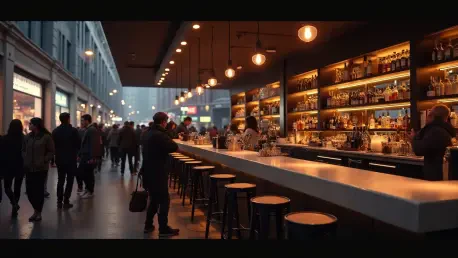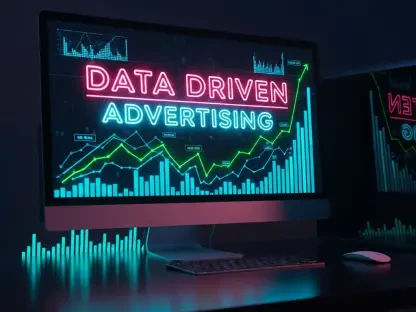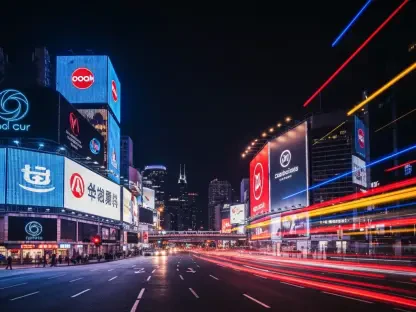In today’s fast-paced digital landscape, social media isn’t just a platform for connection — it’s a powerful tool reshaping industries, especially the On Premise sector. Anastasia Braitsik, a global leader in SEO, content marketing, and data analytics, delves into how social media is transforming brand dynamics in the hospitality landscape. Through this discussion, Anastasia offers valuable insights into consumer behaviors, the evolving role of bartenders as influencers, and balancing digital engagement with real-life experiences.
What role does social media play in shaping the On Premise brand dynamics today?
Social media has become a vital connector between consumers and brands in the hospitality sector. It’s influencing everything from how cocktails are presented to the emerging personalities of bartenders who build large followings. It’s reshaping On Premise dynamics by offering fresh avenues for brand engagement and fostering new loyalties driven by shares rather than direct purchases.
How significant are platforms like Instagram and TikTok in influencing consumer behavior and revenue for bars?
Platforms like Instagram and TikTok are incredibly influential. They serve not only as brand showcases but also drive consumer behavior. They tend to amplify reach and directly impact venue visits and consumer choices, creating revenues by turning visually appealing drinks into trending must-tries. It’s a direct line to customer engagement and can significantly boost a bar’s visibility and reputation.
What are the defining characteristics of a Social Media Superfan in the bar industry?
A Social Media Superfan is someone who thrives on capturing the perfect moment to share online. This person looks beyond just the drink; they seek an experience that is aesthetically pleasing and shareable. Their loyalty is often measured by the number of shares and likes, valuing shareability over traditional metrics like taste or ambiance.
Can you provide statistics on how social media influences venue visits and drink choices?
Absolutely. Nearly three-quarters of consumers, about 72%, have visited a venue after spotting it on social media. Additionally, 39% of guests make drink choices based on how ‘Insta-worthy’ they believe a beverage looks. These numbers highlight the importance of visually driven content in consumer decision-making.
How are bartenders evolving into influencers, and what impact does this have on brand engagement?
Bartenders have become more than just the face behind the counter; they are influencers in their own right, with some coordinating content that inspires consumer choices. They’re leveraging social platforms to blend peer knowledge sharing and customer-facing content, which enhances brand affinity and consumer loyalty. This transition positions them as pivotal representatives who drive engagement and brand growth.
Why do 42% of bartenders believe a strong social presence is more important than heritage or product quality?
Bartenders view a robust social presence as a modern necessity because it reaches a broader audience and creates an immediate connection. In today’s digital age, visibility often trumps traditional concepts like heritage. Strong online engagement builds real-time, dynamic interactions that can propel a brand’s popularity and relevance forward faster than traditional approaches.
In what ways are bartenders becoming bridges from brands to bars?
Bartenders stand at the intersection of brand and consumer. They translate brand narratives into personal stories and experiences that resonate with patrons. By doing so, they effectively bridge the gap, turning the bar into a space where brand messages are lived and shared. Their role as influencers allows them to weave brands into the fabric of the customer experience seamlessly.
What is meant by the term “Social Disconnect,” and what drives this trend?
Social Disconnect is a counter-movement where consumers choose to step back from constant digital engagement. Driven by digital fatigue, people are seeking more mindful and present moments in real life. This leads some to reduce their social media activity, preferring experiences that don’t revolve around documentation and online sharing.
How are consumers opting for more mindful, IRL moments instead of always being digitally connected?
Consumers embracing these mindful moments are actively looking for spaces that encourage presence without digital distraction. They appreciate places where they can form genuine connections and experiences rather than focusing on capturing and sharing each event online. This shift is grounded in a desire for authenticity and valuing experience over exposure.
What are some examples of venues creating no-phone or privacy-focused zones?
Some venues are pioneering ‘phone-free’ or ‘no-photo’ areas, offering guests the chance to engage more directly with their environment and companions. These spaces prioritize privacy over performance, providing a refuge from the incessant need to document everything online. This reflects an emerging desire for spaces that emphasize real over virtual interactions.
How do both digital engagement and disconnection present opportunities for drink brands and bar operators?
These opposing trends offer diverse opportunities. On one hand, digital engagement opens up vast avenues to reach and engage with younger, tech-savvy patrons. On the other, catering to those seeking disconnection allows brands to build trust and emotional connections. By addressing both, they can diversify their appeal and strengthen overall customer relationships.
How can bars balance catering to social media-friendly patrons and those seeking offline experiences?
Balancing these needs means creating spaces that accommodate both. This could involve dedicating certain areas as social media-friendly while providing quiet corners for those who prefer a disconnected experience. Ensuring both types of customers feel valued and considered is crucial to maintaining a successful and inclusive vibe.
What strategies can bars employ to appeal to both social media enthusiasts and those preferring digital detox?
A mix of solutions can work, such as offering unique experiences or themed nights focused on engagement for social media enthusiasts, while organizing quiet, device-free evenings for those seeking respite from the digital world. Bars also benefit from personalizing their offerings, tailoring experiences to reflect the preferences of both groups.
In what ways can understanding these diverging consumer behaviors shape brand strategy?
Comprehending these divergent behaviors allows brands to hone their marketing strategies. By acknowledging the distinct needs and desires of both groups, brands can craft tailored experiences and messaging that resonates with each demographic. This nuanced understanding aids in developing products and strategies that speak directly to their target audience.
How can drinks brands and venue operators achieve a competitive edge in this new age of social engagement?
To gain a competitive edge, businesses must innovate in how they engage with both digitally savvy and digitally weary consumers. Providing a hybrid approach where patrons can enjoy both environments – connected and disconnected – allows brands to cater to a wider audience while fostering brand loyalty and enhancing guest satisfaction.
What are the potential challenges in maintaining both a social-media-friendly and privacy-focused environment?
The primary challenge lies in meeting the expectations of two seemingly opposite audiences. It requires carefully designed spaces that can pivot between these modes with flexibility, ensuring that neither group feels neglected. Operationally, this demands agility and creativity in service design and delivery, maintaining high standards across dual consumer experiences.
Can you elaborate on the insights presented in the “Bars in 2035” report from CGA by NIQ and SIP by Pernod Ricard?
The report highlights emerging trends that promise to reshape the bar industry in the coming years. It focuses on the growing influence of social media, the rise of digital fatigue, and how operators can adapt to these forces. Key insights include the strategic balance required between digital engagement and opportunities for disconnection, both crucial for future success in the industry.
How do you foresee the future of brand engagement evolving in bars by 2035?
By 2035, I anticipate that brand engagement will be more personalized and interactive, with a focus on creating memorable experiences rather than just selling products. Technology will likely play a central role, alongside increased emphasis on creating immersive environments that cater to both digital interaction and genuine, offline engagement. Understanding consumer desires will be key in shaping lasting brand connections.









